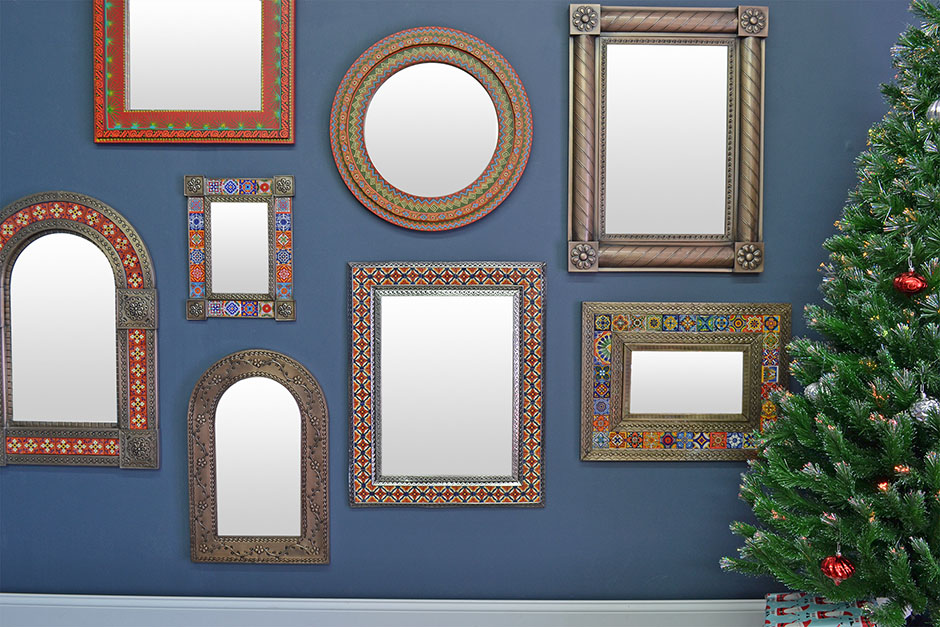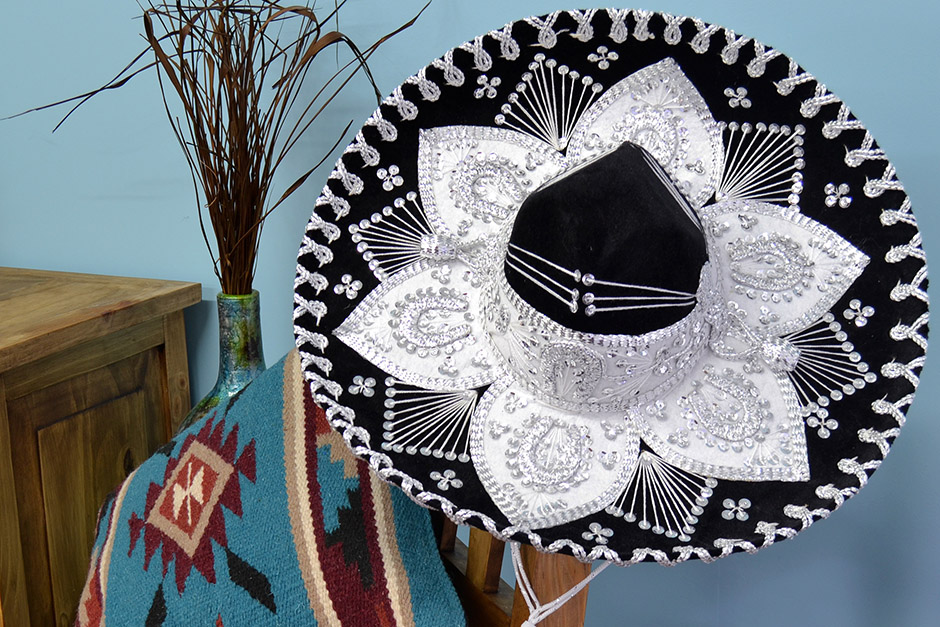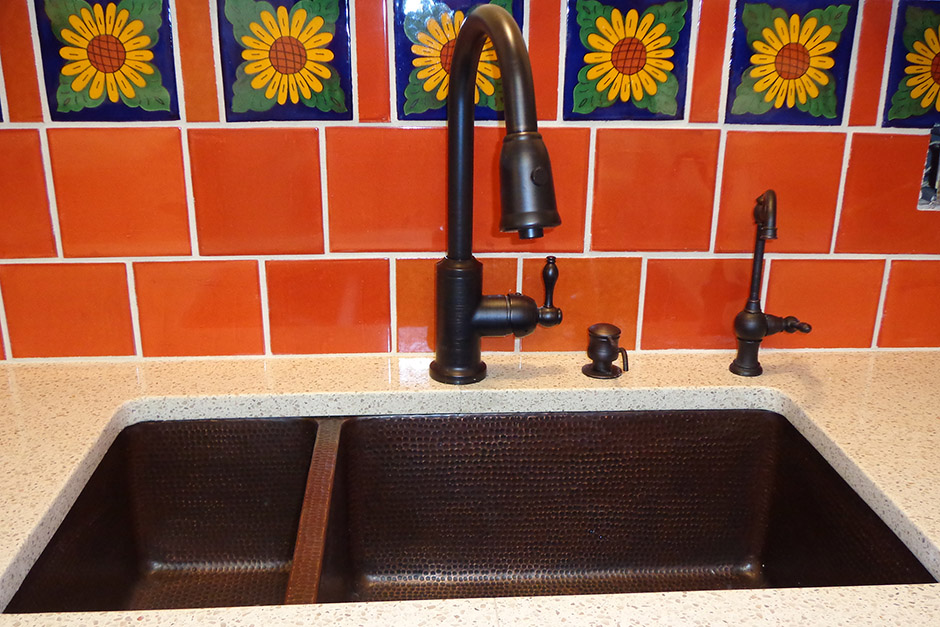Behind the Design
Day of the Dead in Mexico
September 15, 2009
If you've ever spent time in Mexico, it may seem as though the people of this vibrant country celebrate every aspect of life, yet the celebration that stands above them all is one shrouded in death. To a foreigner, this may conjure up images of ghoulish spirits or resurrected zombies, but for Mexicans The Day of the Dead (El Dia de los Muertos) holds another meaning altogether. Each year, as the long, hot days of summer yield to the cool autumn air, preparation begins for a joyous return of loved ones from beyond.
Origins of The Day of the Dead can be linked to ancient practices combined with those assimilated from the heavy hand of Spanish conquerors. Pre-Columbian Mexico had various cultures that celebrated the dead in a mocking, jovial fashion. Among them were the Aztecs, who held their celebrations throughout the month of August in dedication to the goddess Mictecacihuatl - The Lady of the Dead. After the Spanish conquest, original customs were absorbed into Catholic tradition yet continued to live on. In this way, on the first two days of November, the Catholic observance of All Saints Day and All Souls Day is celebrated in Mexico - like nowhere else - as The Day of the Dead.
At the heart of The Day of the Dead lies the belief that for a brief time the spirits of those who died, loved ones and ancestors alike, return to be united with their relatives. Although this is the most prevalent belief, the manner in which it is celebrated can vary regionally or even from town to town. In rural Mexico, The Day of the Dead is more private and usually includes a visit to the local cemetery. Here the gravesites of relatives are tidied up, then lavishly decorated. Marigolds wreaths are arranged and hung, along with long paper streamers to attract the souls of the dead. Picnic blankets are laid out so relatives can enjoy the favorite food and drink of the departed while listening to the festive music of mariachi bands. Some areas even include dancing and singing to celebrate their loved ones.
In cities across Mexico, The Day of the Dead is more of a public festival and popular tourist attraction. Symbols of this holiday can often be seen in schools, public buildings and places of business. In Mexico City, The Day of the Dead celebration hits the streets where decoration knows no bounds. People parade in masks and colorful costumes, and in some places children go door to door in search of small gifts or treats, similar to Halloween.
The most universal tradition of The Day of the Dead, however, takes place behind closed doors, where everyday Mexican homes are transformed into ornate shrines to honor the returning travelers. Day of the Dead altars are erected and adorned with memorabilia, candles, flowers, photos and more. Toys are laid out for children's shrines, or alcohol and food offerings for those commemorating adults. The Day of the Dead is also an important time for family gatherings, when meals are enjoyed and comical stories shared about those who have passed to the afterlife.
The jovial tradition of The Day of the Dead continues through satirical poems called calaveras - meaning "skulls." These clever quips take the form of obituaries or epitaphs, mocking the habits and quirks of a relative's previous life. This form of entertainment dates back to the 19th century, when newspapers first began to print cartoon skeleton drawings to commemorate The Day of the Dead. They used the popularity of the holiday as an opportunity to create pop culture and political puns.
Skillfully crafted skulls and skeletons are, appropriately, the most common symbol of The Day of the Dead and the playful spirit embodied by this celebration. Rather than using gaunt displays to frighten or disturb onlookers, skulls and skeletons alike are employed to mock death. Like the calaveras, Day of the Dead figures display the renowned Mexican sense of humor and transcend the would-be macabre sentiment of such a day. They are used to poke fun at everyday life. Handmade skeletons bear likeness to a bride and groom, mariachi players, debutantes, business men, vagabonds and others, as well as recognizable characters like Elvis, The Grim Reaper and Frida Kahlo - to name a few!
Of course it's not just the Day of the Dead figures that exhibit the mood of this festival. Various Day of the Dead decorations can also be found on t-shirts, tote bags, masks, ceramic tiles and even greeting cards. In this way, variety is limited only to the imagination and creativity of local artists and craftsmen.
The Day of the Dead is a beautiful, uniquely Mexican celebration that comes alive once a year, bringing together the living while reconnecting with lost loved ones. It is a tradition that provides relief to tragedy and scoffs at what we fear most.
Whether you participate in this festival or simply have a passion for Mexican folk art, be sure to browse the work of our numerous talented Mexican artists, where you'll find the largest selection of authentic Day of the Dead decorations available anywhere on the world wide web!
Let's Get Social - Join La Fuente Imports for interior design inspiration on Facebook, Pinterest, Instagram, Twitter and Houzz.



